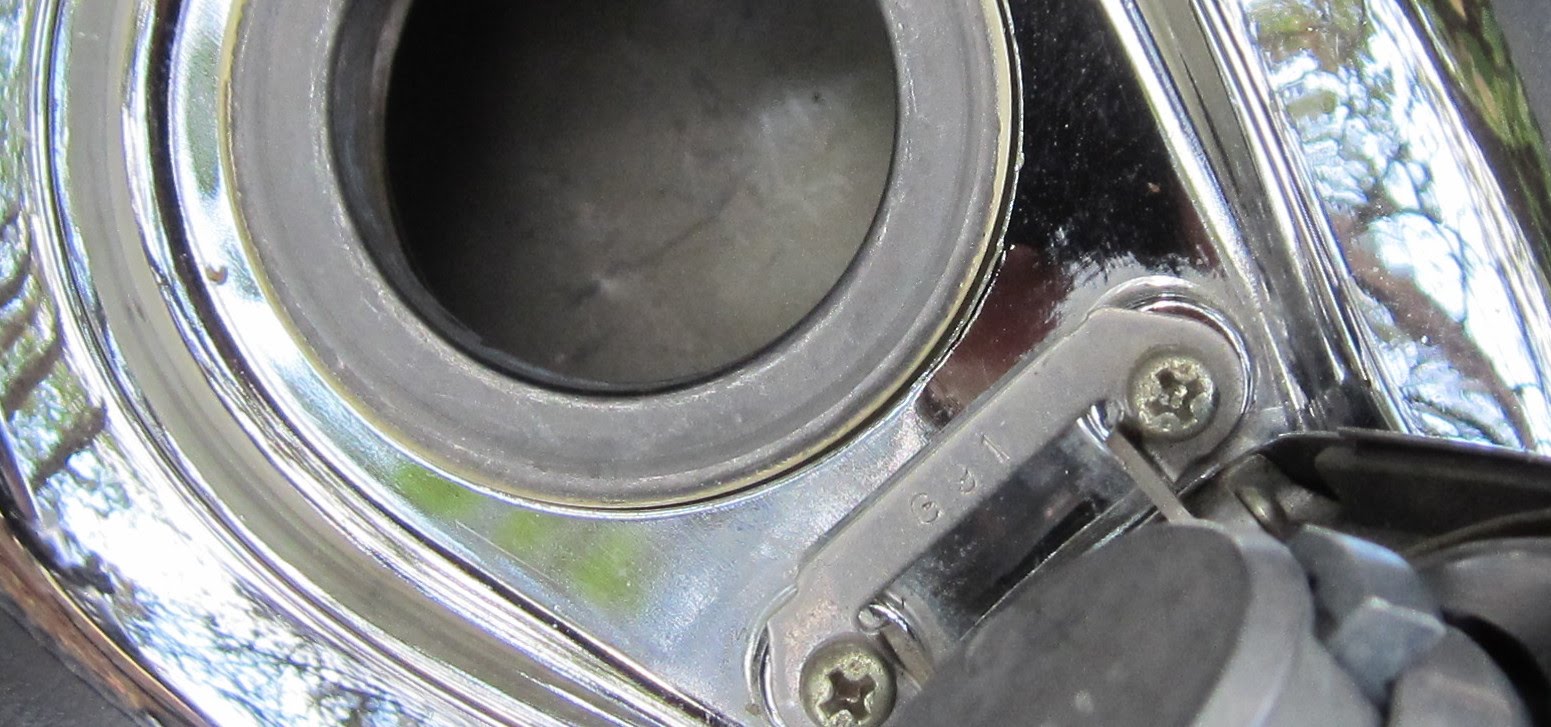|
98valk
|
 |
« on: October 17, 2022, 05:11:58 PM » |
|
Buna-N which OEM o-rings are made of doesn't like naphtha or incorrect spelling of naptha or Pale Oil both with a rating of C - MODERATE TO SEVERE Seafoam, per the current MSDS, is 40-60% Pale Oil (CAS 64742-54-7), 25-35% Naphtha, and 10-20% Isopropyl Alcohol "IPA". haven't found a compatibility chart for Pale Oil aka straight naphthenic mineral oil, however every chart i have found for Naphthalene rates Buna-N as poor rating. I'm not a chemist but it seems to me that any naphth- chemical is bad for Buna-N. https://www.efunda.com/designstandards/oring/oring_chemical.cfm?SM=none&SC=Naphthalene#matAlso Buna-N doesn't like Acetone with a rating of U - UNSATISFACTORY use at your own risk and future o-ring leakage and rebuild. https://rubber-group.com/wp-content/uploads/2018/01/Chemical-Compatibility.pdf |
|
|
|
« Last Edit: October 23, 2022, 07:29:34 AM by 98valk »
|
 Logged
Logged
|
1998 Std/Tourer, 2007 DR200SE, 1981 CB900C 10speed
1973 Duster 340 4-speed rare A/C, 2001 F250 4x4 7.3L, 6sp
"Our Constitution was made only for a Moral and Religious people. It is wholly inadequate to the goverment of any other."
John Adams 10/11/1798
|
|
|
|
98valk
|
 |
« Reply #1 on: October 17, 2022, 05:57:55 PM » |
|
It is important to also note the shelf life for Buna-N rubber as 5-10 years!
That would be incorrect. 15 yrs is listed for o-rings and that is only a recommendation and under only non perfect conditions as noted AS5316 came up with 15ys and as Noted AS5316 deals only with the storage of elastomeric parts and carries no justification for components post application/assemblybig enemy to Buna-N is sunlight and ozone, neither of which will a sealed o-ring in a carburetor ever see. also any other chemicals on the compatibility lists. https://www.globaloring.com/o-ring-shelf-life/remember companies want to sell items and have been making up some crazy rules in the last few decades to make items which last many decades into planned obsolescence items, so as to replace sooner. zero leakage for my '98 which I bought as a new leftover in '00, 75k miles now, zero problems. |
|
|
|
« Last Edit: October 30, 2022, 08:20:20 PM by 98valk »
|
 Logged
Logged
|
1998 Std/Tourer, 2007 DR200SE, 1981 CB900C 10speed
1973 Duster 340 4-speed rare A/C, 2001 F250 4x4 7.3L, 6sp
"Our Constitution was made only for a Moral and Religious people. It is wholly inadequate to the goverment of any other."
John Adams 10/11/1798
|
|
|
h13man
Member
    
Posts: 1866
To everything there is an exception.
Indiana NW Central Flatlands
|
 |
« Reply #2 on: October 18, 2022, 07:09:52 AM » |
|
The time Seafoam is diluted according to directions, I doubt there's anything to be concerned about though I've used 8oz. to 5 gallon ratio once to bring my bike to life of of being garage queen. Took about 2.5 mi. to waken the beast. That was over 9 years ago. I recently done a carb job on 82' GW and tried SF as cleaning agent, not but Berryman B12, oh hell yeah.
|
|
|
|
|
 Logged
Logged
|
|
|
|
|
3W-lonerider
|
 |
« Reply #3 on: October 18, 2022, 04:45:27 PM » |
|
i totally disagree with the whole seafoam argument. my valk was a 1999 had 214,000 miles on it. used seafoam at least once a month and also used it as a stabilizer in the winter.
used tectron also. i never had a carburetor leak or oring failure, only thing ever done to my carbs were the slow jets were replaced with 38's because of a low speed stumble.
|
|
|
|
|
 Logged
Logged
|
|
|
|
|
Highwaymen
|
 |
« Reply #4 on: October 19, 2022, 04:38:06 AM » |
|
The only additive I worry about putting in my gas tank is ethanol, I've Seafoamed multiple bikes that traveled 300k+ miles, I had zero issues, I'm sure pouring the entire bottle instead of four onces in your tank once a month is just asking for trouble.
|
|
|
|
|
 Logged
Logged
|
|
|
|
h13man
Member
    
Posts: 1866
To everything there is an exception.
Indiana NW Central Flatlands
|
 |
« Reply #5 on: October 19, 2022, 06:39:00 AM » |
|
The time Seafoam is diluted according to directions, I doubt there's anything to be concerned about though I've used 8oz. to 5 gallon ratio once to bring my bike to life of of being garage queen. Took about 2.5 mi. to waken the beast. That was over 9 years ago. I recently done a carb job on 82' GW and tried SF as cleaning agent, not but Berryman B12, oh hell yeah.
and that is why today so many carburetors are leaking and needing a rebuild. owners think it is because of age, but that has nothing to do with it. chemicals owners put in their gas are the culprit. remember Seafoam is 1930's technology for 2-stroke outboard engines. I'd be more concerned about the B12 Berryman but using according to instructions and running out on a trip I've been fine. I'm at 47,000 mi. on original stock components and yes I'm sure chit will fail but @ 23 yrs. with at least twice a season fuel additives, nothing so far though this year I haven't ridden enough this year for fuel additives other than the Supertech fuel treatment for winter layup coming here soon. Ethanol gas is a big culprit to this scenario fortunately I'm in a mostly non ethanol state so far. |
|
|
|
|
 Logged
Logged
|
|
|
|
|
98valk
|
 |
« Reply #6 on: October 30, 2022, 08:22:13 PM » |
|
The time Seafoam is diluted according to directions, I doubt there's anything to be concerned about though I've used 8oz. to 5 gallon ratio once to bring my bike to life of of being garage queen. Took about 2.5 mi. to waken the beast. That was over 9 years ago. I recently done a carb job on 82' GW and tried SF as cleaning agent, not but Berryman B12, oh hell yeah.
and that is why today so many carburetors are leaking and needing a rebuild. owners think it is because of age, but that has nothing to do with it. chemicals owners put in their gas are the culprit. remember Seafoam is 1930's technology for 2-stroke outboard engines. I'd be more concerned about the B12 Berryman but using according to instructions and running out on a trip I've been fine. I'm at 47,000 mi. on original stock components and yes I'm sure chit will fail but @ 23 yrs. with at least twice a season fuel additives, nothing so far though this year I haven't ridden enough this year for fuel additives other than the Supertech fuel treatment for winter layup coming here soon. Ethanol gas is a big culprit to this scenario fortunately I'm in a mostly non ethanol state so far. yep B12 has high % of acetone. Buna-N doesn't like Acetone with a rating of U - UNSATISFACTORY |
|
|
|
|
 Logged
Logged
|
1998 Std/Tourer, 2007 DR200SE, 1981 CB900C 10speed
1973 Duster 340 4-speed rare A/C, 2001 F250 4x4 7.3L, 6sp
"Our Constitution was made only for a Moral and Religious people. It is wholly inadequate to the goverment of any other."
John Adams 10/11/1798
|
|
|
|
Savage
|
 |
« Reply #7 on: October 31, 2022, 03:56:45 AM » |
|
|
|
|
|
« Last Edit: October 31, 2022, 04:02:59 AM by Savage »
|
 Logged
Logged
|
Columbia, South Carolina
|
|
|
|
Savage
|
 |
« Reply #8 on: October 31, 2022, 04:04:16 AM » |
|
|
|
|
|
|
 Logged
Logged
|
Columbia, South Carolina
|
|
|
|
Savage
|
 |
« Reply #9 on: October 31, 2022, 04:20:08 AM » |
|
https://www.primaryfluid.com/pdf/chemical_resistance_guide.pdf“B - Good - Minor Effect.” All of us are capable of using internet search engines to find sources that agree with our point of view. Keep in mind that these chemical resistance studies are using the chemicals at full strength unless they specifically list a dilution percentage. A chemical like naphtha/naptha is being greatly diluted when used properly in a full tank of fuel. Also keep in mind that a contributing factor to an “unsatisfactory” rating for chemical resistance can be swelling of the o-ring material. Some industry standards consider that a problem depending on application, others do not. Some people (myself included) absolutely want that effect. I have been successfully using Seafoam in my bikes for years without it causing issues. On the contrary, it has also solved a number of leaks in vehicles that were caused by shrunken o-rings. This is an interesting read if you haven’t checked it out before: https://bobistheoilguy.com/forums/threads/my-o-ring-swelling-test.129732/
|
|
|
|
|
 Logged
Logged
|
Columbia, South Carolina
|
|
|
|
Pluggy
|
 |
« Reply #10 on: October 31, 2022, 07:27:40 AM » |
|
When you take Aspirin, do you guzzle a whole bottle? No, we follow the directions and take one or two. Seafoam directions say use 2oz. per gallon of gasoline. That makes the fuel mix 1.6% Seafoam. With Seafoam being 25% naphtha, that fuel mix is 0.4% naphtha. Not even one half of one percent. This may be why our riders have not experienced problems. There is likely not enough naphtha in the mix to affect O-rings.
|
|
|
|
« Last Edit: October 31, 2022, 08:07:50 AM by Pluggy »
|
 Logged
Logged
|
|
|
|
|
WintrSol
|
 |
« Reply #11 on: October 31, 2022, 08:03:35 AM » |
|
As is said, dosage makes the poison. I've been using Seafoam and B-12 in a variety of engines, small and large, for many years with no adverse effects that I've noted, and many benefits.
|
|
|
|
|
 Logged
Logged
|
98 Honda Valkyrie GL1500CT Tourer
Photo of my FIL Jack, in honor of his WWII service
|
|
|
hubcapsc
Member
    
Posts: 16799
upstate
South Carolina
|
 |
« Reply #12 on: October 31, 2022, 08:17:41 AM » |
|
Mostly just ten percent corn gas goes in here... no additives put in by me...  -Mike |
|
|
|
|
 Logged
Logged
|
|
|
|
|
rug_burn
|
 |
« Reply #13 on: November 01, 2022, 08:22:28 AM » |
|
For that matter- the term: 'Naptha' is not exactly a precise term. In some countries, Naptha means gasoline. I've heard the name applied to such things as lighter fluid, 'tire black' fluid, mineral spirits and certain types of paint thinner. Maybe the Viton recommendation is due to the wide range of petrochemicals that go under that name... You think?
|
|
|
|
|
 Logged
Logged
|
...insert hip saying here..
|
|
|
|
WintrSol
|
 |
« Reply #14 on: November 01, 2022, 12:46:33 PM » |
|
I don't think Seafoam says what it contains, other than what the MSDS says: hydrocarbon blend <95%, isopropanol < 25%. Actual chemicals and ratios are considered proprietary.
|
|
|
|
|
 Logged
Logged
|
98 Honda Valkyrie GL1500CT Tourer
Photo of my FIL Jack, in honor of his WWII service
|
|
|
|
98valk
|
 |
« Reply #15 on: November 01, 2022, 02:36:56 PM » |
|
I don't think Seafoam says what it contains, other than what the MSDS says: hydrocarbon blend <95%, isopropanol < 25%. Actual chemicals and ratios are considered proprietary.
plenty of websites list what it contains esp., www.bobistheoilguy.com, many on there do oil/additive analysis of many products. there are many tribologists on the site also. |
|
|
|
|
 Logged
Logged
|
1998 Std/Tourer, 2007 DR200SE, 1981 CB900C 10speed
1973 Duster 340 4-speed rare A/C, 2001 F250 4x4 7.3L, 6sp
"Our Constitution was made only for a Moral and Religious people. It is wholly inadequate to the goverment of any other."
John Adams 10/11/1798
|
|
|
|
WintrSol
|
 |
« Reply #16 on: November 02, 2022, 08:08:24 AM » |
|
Well, since, as been pointed out, naptha is a catch-all term for a mix of a variety of hydrocarbons, some petroleum derived and some not, I'm not sure how they can declare a percentage. Heck, gasoline meets some of the definition of naptha, as does kerosene (paraffin). It all comes down to the tiny percentage of whatever is in 'naptha' that causes harm to BUNA-N is probably not strong enough to cause harm, at the recommended mix ratios. Data on properly mixed Seafoam, in a long-term test, would be required to actually state that it is harmful, or not, to our fuel systems.
|
|
|
|
|
 Logged
Logged
|
98 Honda Valkyrie GL1500CT Tourer
Photo of my FIL Jack, in honor of his WWII service
|
|
|
|
RP#62
|
 |
« Reply #17 on: November 02, 2022, 08:34:32 AM » |
|
When I worked on the base, we used aliphatic naphtha to wipe down parts before painting and also to clean aircraft windshields. We also had access to aromatic naphtha. The difference I found is that aliphatic naphtha works great on aircraft windshields whereas aromatic will craze the sh!t out of it and get you yelled at. You had to be careful with aliphatic because its flashpoint was around 28°F and if you put it on a rag to wipe stuff down with it had to be a non static generating rag as if there was any static, it would ignite the rag.
-RP
|
|
|
|
|
 Logged
Logged
|
|
|
|
|
cookiedough
|
 |
« Reply #18 on: November 20, 2022, 02:49:50 PM » |
|
yah, do not overdue any of it whether seafoam or Berrymans B12, etc. I once put only about 1 ounce (way too much) of seafoam in a dinky 20 inch push mower gas tank and could not fire it up at all would not start. I had to drain the gas out and put fresh stuff in and was not due to E10 gas, but too much seafoam I think.
Best thing, IMO, is before winter layaway, run last 2-3 tankfuls NON ethanol gas in gas tank. I use a tad bit of seafoam and fuel stabilizer in a full tank of 91 octane NON ethanol gas last run of the year which will be this Thursday or this weekend since last chance of above 40 degree temps this year before April 1st 2023.
|
|
|
|
|
 Logged
Logged
|
|
|
|
|






